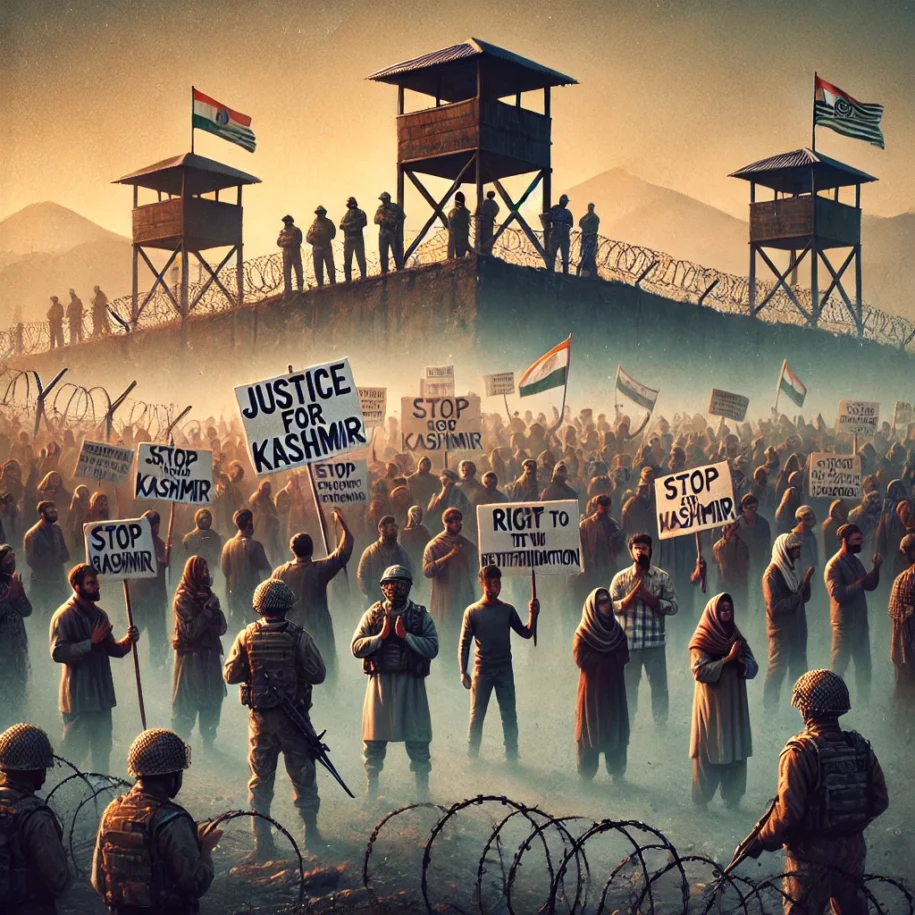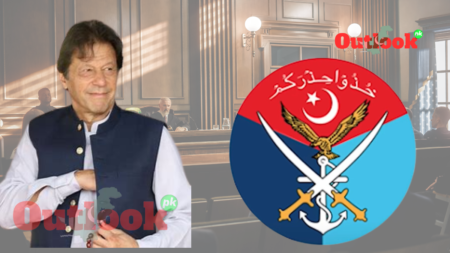The False Narrative of Normalcy
On August 5, 2019, the Indian government, led by Prime Minister Narendra Modi, abrogated Articles 370 and 35(a) of the Indian Constitution, effectively stripping Jammu and Kashmir of its special status. This unilateral move aimed to fully integrate the region into India, a decision that has been widely criticized as illegal and in violation of international law, including United Nations Security Council resolutions. Despite these criticisms, the Indian government has persistently pushed a narrative of “normalcy” and “development” in the region, seeking to downplay the significant political, social, and humanitarian crises that have unfolded since.
The Modi administration’s narrative has been one of progress and stability, claiming that the abrogation would bring development and modernity to IIOJK. However, this portrayal is starkly at odds with the ground realities, where human rights abuses, demographic manipulations, and severe restrictions on freedoms continue unabated.
Demographic and Political Changes
Before August 5, 2019, Articles 370 and 35(a) provided Jammu and Kashmir with a degree of autonomy, including its constitution and laws. These provisions also protected the region’s demographic composition by preventing outsiders from acquiring land and jobs. The revocation of these articles has led to significant demographic engineering, aimed at altering the region’s Muslim-majority status. This has included issuing domicile certificates to non-residents, a move seen as a deliberate attempt to change the demographic makeup of the region.
President Asif Ali Zardari and other Pakistani leaders have condemned these actions as a gross violation of international law and a betrayal of promises made to the Kashmiri people. The Indian government’s actions are viewed as part of a broader “Hindutva” agenda, promoting Hindu supremacy and marginalizing Muslim communities.
Human Rights Violations
The situation in IIOJK has deteriorated significantly since the abrogation. The region has become one of the most militarized zones in the world, with over 900,000 Indian troops deployed. The heavy military presence has resulted in widespread human rights abuses, including arbitrary detentions, enforced disappearances, torture, and extrajudicial killings. Reports from international human rights organizations and local activists have documented these abuses extensively.
The Modi government has also enacted draconian laws granting impunity to security forces, further exacerbating the situation. The use of rape and sexual violence as tools of oppression has been reported, and cultural and religious sites have been targeted, eroding the region’s ethno-religious identity.
Media Manipulation and Information Control
To maintain the illusion of normalcy, the Indian government has tightly controlled information flow from IIOJK. Journalists and human rights defenders face harassment, intimidation, and even arrest under the guise of anti-terrorism laws. Media outlets sympathetic to the government have played a significant role in perpetuating the false narrative of peace and development, often ignoring or downplaying the harsh realities faced by the local population.
The government’s efforts to portray IIOJK as a peaceful and developing region have included hosting cultural and sports events and promoting tourism. High-profile visits by celebrities and diplomats have been used to paint a picture of normalcy. However, these orchestrated events cannot mask the everyday struggles and violence faced by Kashmiris.
The Economic and Social Impact
Despite claims of economic development, the reality on the ground is bleak. The region’s economy has suffered due to frequent curfews, internet shutdowns, and a heavy security presence. Local businesses have struggled, leading to high unemployment rates and economic stagnation. The disruption of daily life has had profound psychological and emotional effects on the population, particularly among the youth.
The local population has expressed widespread dissatisfaction and frustration with the Indian government’s policies. The dismantling of the region’s political autonomy and the imposition of direct rule from New Delhi have alienated many Kashmiris, leading to a deep sense of disenfranchisement.
The International Community’s Role
The international community has been urged to take a stronger stance against the human rights violations in IIOJK. While there have been expressions of concern, concrete actions have been limited. The Modi government’s efforts to present India as a counterweight to China and a lucrative market have sometimes overshadowed the need for a robust response to the situation in Kashmir.
Prime Minister Shehbaz Sharif and other Pakistani leaders have called for the international community to pressure India to comply with UN resolutions and respect human rights. They argue that sustainable peace in South Asia can only be achieved through a just resolution of the Kashmir issue, respecting the aspirations of the Kashmiri people.
FAQs
1. What is the significance of Articles 370 and 35(a) in Jammu and Kashmir?
Articles 370 and 35(a) granted special autonomy to Jammu and Kashmir, allowing it to have its own constitution and laws. These articles also protected the region’s demographic composition by restricting property ownership and employment to local residents.
2. What changes have occurred in IIOJK since August 5, 2019?
Since the revocation of Articles 370 and 35(a), there have been significant demographic and political changes in IIOJK, including the issuance of domicile certificates to non-residents and the redrawing of electoral boundaries. These changes aim to alter the region’s demographic makeup and undermine its Muslim-majority status.
3. What are the main human rights concerns in IIOJK?
Human rights concerns in IIOJK include arbitrary detentions, enforced disappearances, torture, extrajudicial killings, and restrictions on free speech and assembly. The region has seen a heavy military presence and the use of draconian laws to suppress dissent.
4. How has the Indian government tried to portray the situation in IIOJK?
The Indian government has promoted a narrative of normalcy and development in IIOJK, using media manipulation, tourism promotion, and high-profile visits to present a positive image. However, this narrative is at odds with the documented human rights abuses and economic struggles in the region.
5. What is the international community’s stance on the situation in IIOJK?
The international community has expressed concern over the situation in IIOJK, but concrete actions have been limited. Pakistani leaders and human rights organizations continue to urge the international community to hold India accountable and push for a resolution in line with UN resolutions.
Conclusion
The Indian government’s portrayal of “normalcy” in Indian Illegally Occupied Jammu and Kashmir is a carefully crafted narrative that obscures the reality of human rights abuses, demographic changes, and political repression. As the world marks the fifth anniversary of the abrogation of Articles 370 and 35(a), it is crucial to acknowledge the ongoing struggles faced by the Kashmiri people. The international community must not be swayed by superficial claims of progress and development but should instead advocate for justice and the upholding of human rights in the region. The true path to peace in South Asia lies in addressing the grievances of the Kashmiri people and respecting their right to self-determination.







